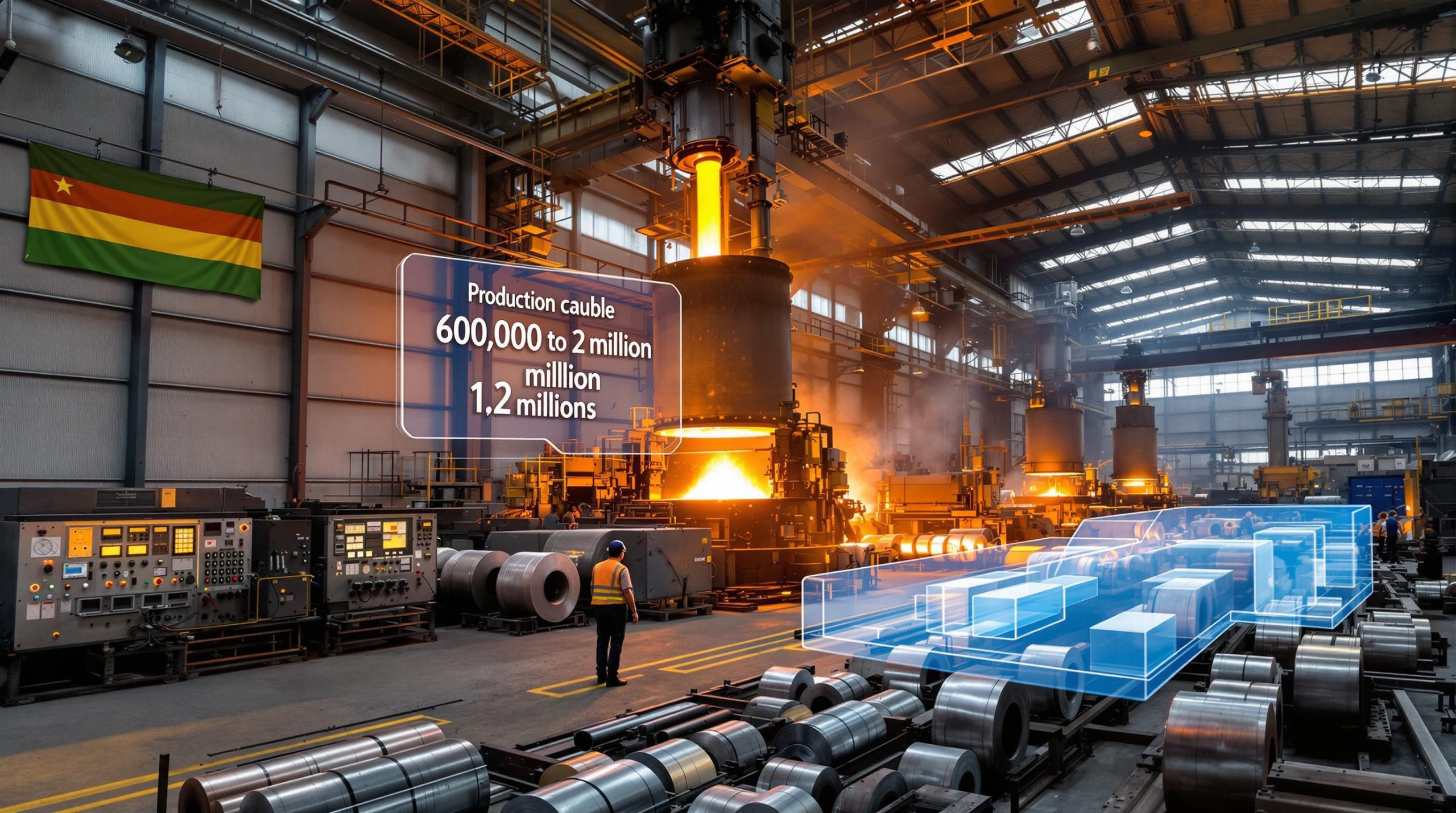What is the Westmoreland Uranium Project and Why is it Important?
The Westmoreland Uranium Project represents one of Australia's most promising uranium development opportunities, strategically located in northwest Queensland. Recently, the project reached a critical milestone when Laramide Resources was granted a Mineral Development License (MDL) on July 18, 2025—marking a pivotal advancement toward potential production.
This development license provides Laramide with formal recognition of the project's economic viability and secures the company's tenure rights to proceed with advanced mining studies, creating a pathway for future mine development.
Key Project Components and Location
The Westmoreland Project spans an extensive area in Queensland's uranium-rich northwest region, approximately 400km north of Mount Isa. The project encompasses four defined uranium deposits with distinct geological characteristics:
- Redtree deposit – The largest of the four deposits, containing approximately 60% of the project's resource base
- Huarabagoo deposit – Located approximately 5km south of Redtree
- Junnagunna deposit – Situated along the same geological structure as Huarabagoo
- Long Pocket deposit – A satellite deposit discovered during exploration activities
These deposits form part of a mineralized trend extending over 13km, with uranium mineralization typically found in shallow, near-surface formations within the Westmoreland Conglomerate.
Historical Development and Economic Assessment
The project has undergone extensive exploration and evaluation since its discovery in the 1970s. Laramide's 2016 economic assessment demonstrated the project's potential viability, highlighting:
- A substantial resource base with defined uranium oxide concentrations
- Favorable metallurgical characteristics allowing conventional processing
- Potential for an open-pit mining operation with moderate stripping ratios
- Projected competitive operating costs compared to global uranium producers
"The Westmoreland Project represents one of Australia's most significant undeveloped uranium resources with considerable strategic importance in the context of global energy security," notes Marc Henderson, Laramide's President and CEO.
This historical work laid the groundwork for the recent MDL approval, which validates the project's economic significance.
How Did Laramide Resources Secure the Development License?
The journey to obtaining the Mineral Development License involved several critical steps demonstrating the project's viability and Laramide's commitment to responsible development practices.
The Approval Process and Indigenous Agreements
Securing the MDL required Laramide to navigate a complex regulatory landscape while establishing strong community relationships:
- Indigenous Land Use Agreement (ILUA) – Signed in November 2022 with the Gangalidda & Garawa Native Title Aboriginal Corporation, creating a legally binding framework for project development
- Resource definition – Completion of extensive drilling and geological modeling to confirm economically recoverable uranium resources
- Technical studies – Submission of detailed technical documentation demonstrating the project's engineering feasibility
- Economic viability – Financial modeling showing the project could generate sustainable returns under projected market conditions
The ILUA represents a particularly significant achievement, as it establishes a foundation for ongoing collaboration with Traditional Owners. This agreement addresses cultural heritage protection, environmental management, and economic participation opportunities for Indigenous communities.
What the MDL Enables for Laramide
The newly granted MDL provides Laramide Resources with several strategic advantages:
- Tenure security – Guarantees Laramide's right to advance the project through detailed feasibility studies
- Regulatory recognition – Confirms the Queensland government's acknowledgment of the project's defined uranium resource
- Development pathway – Creates a clear progression toward potential mining lease applications
- Investment certainty – Provides shareholders and potential investors with confidence in the project's regulatory standing
- Regional commitment – Demonstrates Laramide's long-term investment in Queensland's resources sector
Marc Henderson described the MDL approval as "a significant milestone for Laramide and the Westmoreland Project," emphasizing that it "provides regulatory confirmation that the project hosts a defined and economically significant resource."
What Challenges Remain for the Westmoreland Project?
Despite the MDL approval representing substantial progress, several significant hurdles must be overcome before Westmoreland can transition from advanced exploration to uranium production.
Queensland's Uranium Mining Policy
The most prominent challenge facing the Westmoreland Project is Queensland's current policy framework regarding uranium mining:
- Queensland has maintained a prohibition on uranium mining since 2015, despite allowing exploration
- The policy prevents the granting of mining leases specifically for uranium extraction
- Any project advancement toward production would require a formal policy reversal
- Such a change would likely necessitate legislative amendments or new regulatory frameworks
Industry analysts note that the recent election of a Liberal National majority government in Queensland could potentially signal a shift in this policy stance. Historically, Liberal National governments have shown more openness to uranium mining, though no formal policy change has been announced.
"While the MDL represents significant progress, the path to production still requires resolution of Queensland's uranium mining policy," explains resources policy expert Dr. Elizabeth Harrington. "The prohibition represents a political rather than technical barrier."
Technical and Economic Considerations
Beyond the regulatory landscape, the Westmoreland Project faces several technical and economic challenges:
- Feasibility studies – Comprehensive technical and financial assessments must be completed
- Infrastructure development – The remote location requires significant investment in roads, power, and water management
- Environmental management – Detailed plans for waste management and site rehabilitation need development
- Market conditions – Project economics remain subject to uranium market volatility
- Capital requirements – Estimated initial capital expenditure exceeds $300 million
The project must also address water management concerns in the semi-arid northwest Queensland environment, with solutions likely involving sophisticated water recycling systems and potentially desalination technologies for processing operations.
Who is Laramide Resources and What are Their Plans?
Understanding Laramide's corporate profile and strategic vision provides important context for evaluating the Westmoreland Project's prospects.
Company Background and Project Ownership
Laramide Resources (TSX: LAM, ASX: LAM) has established itself as a specialized uranium development company with a multi-jurisdictional portfolio:
- Founded in 1980 and publicly listed on the Toronto Stock Exchange
- Dual-listed on the Australian Securities Exchange since 2013
- Operates in Australia through its subsidiary, Tackle Resources Pty Ltd
- Holds 100% ownership of the Westmoreland Project following acquisition from Rio Tinto in 2005
- Recently attracted significant investment from Boss Energy, which acquired 23.5 million shares in March 2025
- Maintains additional uranium assets in the United States, including the Church Rock and Crownpoint projects
Boss Energy's substantial investment represents a strategic validation of Laramide's development approach, particularly significant given Boss's operational expertise at the Honeymoon uranium mine in South Australia.
Strategic Vision for Westmoreland
Laramide has outlined a clear strategic direction for the Westmoreland Project, focusing on its potential contribution to global uranium markets:
- Accelerated evaluation – The company plans to expedite technical studies following the MDL approval
- Supply deficit targeting – Positioning the project to address projected uranium shortages in the 2030s
- Western market focus – Developing a supply source for non-Russian aligned nuclear utilities
- Phased development – Potential for staged production ramp-up to optimize capital efficiency
- Regional development – Commitment to northwest Queensland economic growth through local procurement and employment
Marc Henderson emphasized this vision: "We believe Westmoreland can play a material role in addressing the structural supply deficit of uranium extending into the 2030s, providing security of supply for western nuclear utilities."
What is the Significance of This Development for the Uranium Market?
The advancement of the Westmoreland Project occurs against a backdrop of transformative changes in global uranium markets and energy security priorities.
Global Uranium Supply Context
Several factors make the Westmoreland Project's development particularly timely:
- Supply-demand imbalance – The World Nuclear Association projects a global uranium deficit exceeding 50 million pounds annually by 2030
- Geopolitical realignment – Western utilities are actively seeking supply diversification away from Russian and Kazakhstan sources
- Nuclear renaissance – Over 60 new reactors are under construction globally with hundreds more planned or proposed
- Small modular reactor development – Emerging technologies creating new uranium demand categories
- Secondary supply depletion – Historical inventory drawdown reducing available non-production sources
The Westmoreland Project, with its substantial resource base in a politically stable jurisdiction, represents a potential source of supply security for western utilities increasingly concerned about US uranium disruption and geopolitical risks to their fuel supply chains.
Regional Economic Implications
Beyond its global significance, the project offers substantial economic benefits for Queensland:
- Capital investment – Potential investment of over $300 million in initial development
- Employment creation – Hundreds of construction jobs and approximately 150-200 long-term operational positions
- Skills development – Opportunities for specialized mining and processing training
- Supply chain growth – Development of regional suppliers and service providers
- Infrastructure improvement – Potential upgrades to regional transportation networks
- Tax revenue generation – Royalty and corporate tax contributions to state and federal governments
"The northwest minerals province has significant potential for further development, with projects like Westmoreland representing opportunities for sustainable regional growth," notes Queensland Resources Council spokesperson James Thompson.
These economic benefits could be particularly significant for Indigenous communities in the region through implementation of the established ILUA.
What Steps Come Next for the Westmoreland Project?
With the MDL secured, Laramide has outlined a comprehensive development pathway, though timing remains contingent on policy developments.
Pathway to Production
The company's forward strategy encompasses several parallel workstreams:
- Definitive feasibility study – Comprehensive technical and economic assessment
- Environmental impact statement – Detailed evaluation of environmental effects and management strategies
- Detailed engineering design – Advanced planning for processing facilities and mine infrastructure
- Community engagement – Ongoing consultation with Indigenous partners and regional stakeholders
- Financing arrangements – Structuring of capital requirements and potential partnership models
- Mining lease preparation – Development of application materials for when policy permits submission
These activities represent significant investment, with feasibility and environmental studies alone likely to cost $15-20 million over an 18-24 month timeframe.
Timeline Considerations
The project's development timeline faces several key variables:
- Policy change timing – Any uranium mining ban reversal would require formal government action
- Regulatory processing – Environmental approvals typically require 12-24 months for assessment
- Market conditions – Uranium price trends influencing uranium investment strategies
- Financing availability – Capital market conditions for uranium development projects
- Technical optimization – Potential processing innovations affecting project economics
Industry analysts suggest that even with favorable policy changes, production would unlikely commence before 2028-2029, given the extensive preparatory work required and typical construction timeframes for uranium processing facilities.
FAQs About the Westmoreland Uranium Project
What is a Mineral Development License (MDL)?
An MDL is a regulatory approval granted under Queensland's Mineral Resources Act that recognizes a project's potential for development and provides security of tenure for advanced mining studies. It represents an intermediate step between exploration permits and mining lease applications, enabling companies to conduct detailed feasibility studies, environmental assessments, and mine planning activities.
MDLs typically have a five-year duration and can be renewed, giving companies sufficient time to complete comprehensive project evaluations before committing to full-scale development.
Why is the Indigenous Land Use Agreement significant?
The ILUA with the Gangalidda & Garawa Native Title Aboriginal Corporation is legally binding under Australia's Native Title Act 1993 and establishes a comprehensive framework for project development that respects Indigenous rights. This agreement:
- Recognizes Traditional Owners' connection to the land
- Establishes protocols for cultural heritage protection
- Creates mechanisms for ongoing consultation
- Provides economic participation opportunities through employment, training, and business development
- Ensures environmental management aligns with cultural values
- Creates legal certainty for both parties regarding future obligations
Without this agreement, the project could face legal challenges and community opposition, making the ILUA a foundational element for responsible development.
How does Queensland's policy on uranium mining affect the project?
Queensland's prohibition on uranium mining, implemented in 2015, represents the most significant regulatory barrier to the Westmoreland Project's advancement. While exploration and development studies are permitted, the policy prevents:
- Granting of mining leases specifically for uranium extraction
- Processing of uranium ore within Queensland
- Transportation of uranium concentrates through certain areas
Any change to this policy would likely require:
- Cabinet-level policy decision
- Potential legislative amendments
- Development of new regulatory frameworks for uranium mining
- Establishment of specialized compliance and monitoring systems
The current Liberal National government has not yet announced its intentions regarding this policy, though resource industry advocates continue to lobby for its reversal.
What impact could the Westmoreland Project have on uranium markets?
If developed, Westmoreland could make a meaningful contribution to addressing projected uranium supply shortfalls:
- Potential production capacity of approximately 2-3 million pounds U₃O₈ annually
- Representing approximately 1-2% of global uranium production
- Production profile potentially extending 15+ years
- Supply from a politically stable jurisdiction with strong ESG credentials
- Diversification option for utilities seeking non-Russian/Kazakh sources
This production would be particularly significant for Australian uranium exports, potentially increasing the country's output by 20-30% from current levels, especially important in light of the Paladin uranium halt in Namibia.
What connection exists between Boss Energy and Laramide Resources?
In March 2025, Boss Energy acquired 23.5 million shares in Laramide Resources, representing a strategic investment in the company's uranium development portfolio. This connection is notable because:
- Boss Energy operates the Honeymoon uranium mine in South Australia
- The investment provides Boss with diversification across multiple uranium jurisdictions
- The stake potentially enables knowledge sharing on Australian uranium development
- It represents industry validation of Laramide's project portfolio
- The connection could facilitate future operational collaboration
While Boss Energy's investment does not include direct project ownership, it establishes a significant relationship between two uranium-focused companies with complementary Australian assets.
Further Exploration of Australian Uranium Development
The Westmoreland Project exists within a broader context of Australian uranium development that spans multiple states and territories. Australia holds approximately 30% of the world's known uranium resources but currently accounts for only about 12% of global production.
South Australia and Northern Territory currently permit uranium mining, with active operations including Olympic Dam (BHP) and Ranger (rehabilitation phase). Western Australia has periodically changed its policy stance, while Queensland and New South Wales maintain prohibitions.
For investors and industry observers, the Westmoreland Project represents an important test case for Queensland's resources policy and Australia's broader position in global uranium markets. As nuclear energy gains increasing recognition for its role in clean energy transitions and with the US uranium import ban shifting supply dynamics, projects like Westmoreland may become increasingly strategic for both regional economies and global supply security.
Ready to Spot the Next Major Mineral Discovery?
Discovery Alert's proprietary Discovery IQ model instantly identifies significant ASX mineral discoveries, providing actionable insights for both short-term traders and long-term investors before the broader market responds. Explore how historic discoveries have generated substantial returns by visiting the Discovery Alert discoveries page and position yourself to capitalise on the next market-moving announcement.




